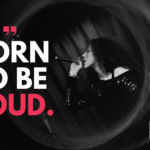Now Reading: The Ultimate Guide to Pitching Your Music to Playlists and Radio
-
01
The Ultimate Guide to Pitching Your Music to Playlists and Radio
The Ultimate Guide to Pitching Your Music to Playlists and Radio

Article by Manuela Bittencourt – 08/04/2025
Getting your music featured on playlists or played on the radio can dramatically boost your exposure, grow your audience, and open doors in the music industry. Playlists—especially on platforms like Spotify, Apple Music, and Deezer—can introduce your track to thousands (or even millions) of new listeners. Meanwhile, radio airplay still holds sway, particularly in genres like pop, rock, and country, and can build your credibility with industry gatekeepers.
But how do you actually land those placements? Who do you pitch to? What makes a pitch stand out? And how can you follow up without being pushy?
In this guide, we’ll walk you through how to pitch your music to both playlists and radio—from identifying the right contacts and understanding how different platforms work, to crafting a compelling pitch and following up without being a nuisance. Whether you’re an independent artist or just starting to build your team, these strategies will help you increase your chances of getting your music heard.
Radio Promotion
What Is Radio Promotion?
Radio promotion is the process of convincing radio programmers—usually Program Directors (PDs) or Music Directors (MDs)—to add your song to the station’s playlist or rotation. Rotation refers to how frequently a song gets played:
- Light
- Medium
- Heavy
- Power
At its core, radio promotion is a sales job. You’re persuading stations that playing your track will help them retain listeners and drive engagement.
Why It Still Matters
- Mass Exposure: Radio still reaches millions of listeners.
- Discovery for Older Audiences: While streaming dominates among younger fans, radio remains influential for listeners aged 35+.
- Label Strategy: Major labels use radio to break and sustain hits.
The Changing Role of Radio
According to Edison Research (2020):
- FM/AM is most popular with 55+ listeners
- Ages 35–54: Second to YouTube
- Under 35: Radio’s role has shrunk significantly
- Ad revenue for over-the-air radio dropped 40% from 2005–2020
- Streaming platforms provide more accurate data vs. traditional radio ratings
Types of Radio
- Terrestrial (FM/AM)
- Satellite (e.g., SiriusXM)
- Internet Radio (e.g., simulcasts, Pandora)
Each station operates under a format (e.g., pop, urban AC, alt-rock) that defines its target audience. These formats can shift if listener engagement drops.
Key Radio Metrics
Terrestrial:
- AQH (Average Quarter-Hour): How many people listen during a 15-minute window
- AQH Rating: % of the audience tuned in during AQH
- TSL (Time Spent Listening): How long people stay tuned
Internet/Satellite:
- AS (Active Sessions): How many listeners stay for at least one minute
- TLH (Total Listening Hours): Combined duration of all sessions
- AAS (Average Active Sessions)
Commercial vs. Non-Commercial Radio
Commercial Radio
- Driven by advertising revenue
- Major gatekeepers: PDs and MDs
- Power players: iHeartMedia, Audacy, Cumulus
- Genre focus: Strong in pop, country, rock
- Harder for indie artists to break in
- Campaigns are expensive: $100K+ for R&B/Hip-Hop, $300K+ for pop
Stations aren’t typically in the business of “breaking” new artists—they want proven demand (streaming stats, Shazam activity, local buzz, ticket sales).
Non-Commercial Radio (College, Community, NPR)
- Mission-first, not profit-first
- More open to new or experimental music
- Easier to access PDs/MDs (especially at college stations)
- Often combine structured rotation with DJ-curated shows
Example: WVUM (University of Miami) has global online streaming and a reputation for breaking indie acts.
Independent Promoters
These are professionals—often unaffiliated with labels—who pitch tracks to radio stations.
- Essential for commercial campaigns
- Costly but can be influential
- Not all reputable: Some tied to past payola scandals
- Many top stations won’t take unsolicited pitches without a promoter
A Note on Payola
- Payola = paying for airplay without disclosing it
- Illegal since 1960
- Modern laws apply across radio and streaming
- Controversies resurfaced in 1986 and 2005–06
Playlist Promotion
4 Types of Playlists
- Editorial (Curated by platforms)
- Spotify, Apple Music, Deezer teams
- Submit via Spotify for Artists at least 1 week pre-release
- Algorithmic (Personalized for each user)
- Examples: Discover Weekly, Release Radar, Pandora Genome
- Based on listening behavior and metadata
- Branded (Run by companies, artists, or labels)
- Examples: Digster (Universal), Filtr (Sony), Nike Workout Playlist
- User-Generated
- Everyday listeners creating viral playlists
- Can have big followings and influence
How to Promote to Playlists
Platform Editorials
- Submit via artist dashboards (Spotify for Artists, Apple Music for Artists)
- Make sure your metadata and pitch are strong
Branded/User Playlists
- Identify relevant curators
- Research how they accept submissions
- Personalize outreach via email, DMs, or mutual contacts
- Offer value (great track, clean artwork, matching genre)
Third-Party Services
- Sites like SubmitHub let you pitch to curators
- No guarantees, but can get you exposure and feedback
Discovery Mode (Spotify)
- Artists trade reduced royalties for increased algorithmic exposure
- Criticism: Some see this as a new form of payola
- Supported by many aggregators, disliked by major labels
Crafting Your Pitch Email
Make a Strong First Impression
Subject line examples:
- “New Indie Single: ‘[Song Title]’ by [Your Artist Name]”
- “Playlist Submission: ‘[Track Title]’ for [Genre/Curator]”
- “For College Radio: Introducing [Your Song Name]”
Personalize It
- Use the person’s name
- Reference their playlist, show, or station
- Avoid mass emails—people can spot them instantly
Include:
- Short bio (1–2 lines)
- Track link (Dropbox, SoundCloud, or Spotify URI)
- Press & social proof (e.g., “Featured on KEXP” or “Opened for [Artist]”)
- Press photos & EPK (if available)
- A thank you — always be courteous and appreciative
Follow Up the Right Way
Give It Time
- Wait 1–2 weeks before sending a follow-up.
Follow-Up Example:
Hi [Name],
Just checking in to see if you had a chance to listen to “[Track Name].” I’d love to hear your thoughts.
Thanks again for considering it!
Best,
[Your Name]
Know When to Move On
- Limit yourself to 1–2 follow-ups. If you don’t get a response, leave it respectfully and try elsewhere.
Bonus Tips
- Build Real Relationships: Support curators and DJs before you pitch—comment on their work, share their shows, and stay active on socials.
- Pitch Early: Send 4–6 weeks before your release or target air date.
- Stay Organized: Use a spreadsheet to track contacts, dates, responses, and outcomes.
- Use Data Wisely: Pay attention to where your music performs well—those insights can guide your next pitch.
Final Thoughts
Getting on playlists and radio isn’t just about the song—it’s about your strategy, persistence, and professionalism. The right pitch, sent to the right person at the right time, can lead to game-changing exposure.
Radio might not dominate the way it once did, but it still holds real influence—especially in certain genres. And playlists? They’re now one of the most powerful discovery tools in music.
Keep refining your approach. Pitch smart. And remember: every placement is progress.























